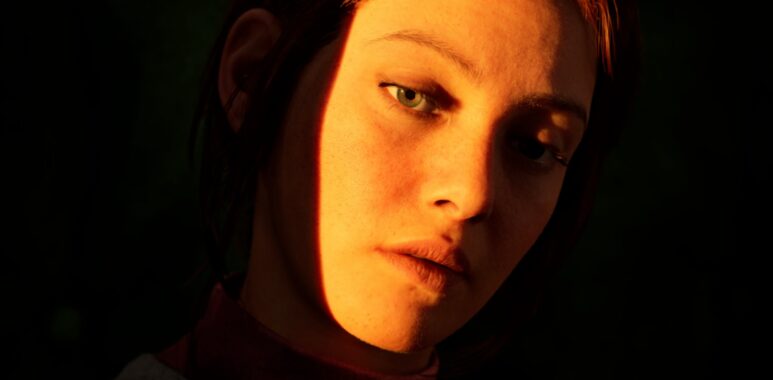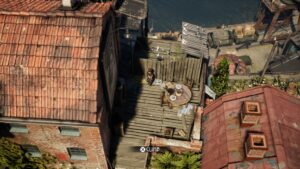
Eriksholm: The Stolen Dream – A Nordic Stealth Adventure Redefining the Genre
Released on July 15, 2025, Eriksholm: The Stolen Dream is a narrative-driven, isometric stealth adventure developed by River End Games and published by Nordcurrent Labs. Available on PlayStation 5, Xbox Series X/S, and PC (with Steam Deck verification), the game has emerged as a standout title in the stealth genre, blending a gripping story, innovative multi-character mechanics, and a visually stunning world inspired by early 20th-century Scandinavian cities. Set in the fictional city of Eriksholm, the game follows Hanna, a young orphan, as she searches for her missing brother, Herman, uncovering a conspiracy that threatens the city’s future. With its tight, puzzle-like stealth mechanics, emotionally resonant narrative, and breathtaking Unreal Engine 5 visuals, Eriksholm has been hailed as a landmark stealth game, earning high praise from critics and players alike. This 2000-word article delves into the game’s development, gameplay, story, technical achievements, and cultural impact, exploring why Eriksholm: The Stolen Dream is a must-play title for 2025.

Eriksholm: The Stolen Dream marks the debut of River End Games, a Swedish studio founded by Anders Hejdenberg, a veteran of Battlefield 2: Modern Combat. The team, consisting of up to 19 members with experience on titles like Little Nightmares, Mirror’s Edge, and Unravel, aimed to create a stealth game that prioritized narrative and atmosphere over traditional combat-heavy mechanics. Announced at the Future Games Show Summer Showcase on June 8, 2024, the game was acquired by Nordcurrent in 2023, with publishing head Andrius Mackevičius praising the studio’s ability to deliver a “special” experience despite its small size.
The developers drew inspiration from Scandinavian cities like Gothenburg, Stockholm, and Malmö, crafting a fictional world that blends early 20th-century architecture with a whalepunk aesthetic, featuring steam engines and hanging trolley carts reminiscent of Dishonored. The team initially considered using Unity but opted for Unreal Engine 5 for its physically based rendering and advanced tools like MetaHuman, which streamlined facial animations for their small team. This choice enabled Eriksholm to deliver cinematic cutscenes that rival AAA titles, a remarkable feat for a debut project.
River End Games set out to differentiate Eriksholm from traditional stealth games like Commandos or Desperados III, which emphasize sandbox-style gameplay. Instead, they designed a linear, puzzle-driven experience that feels like “a puzzle game wearing the skin of a stealth adventure”. Creative director Anders Hejdenberg emphasized grounding the game in a realistic, technology-driven world without fantastical elements like dragons or magic, ensuring the setting felt authentic to its Nordic inspiration. The team’s focus on character-driven storytelling and environmental interactivity aimed to evoke the emotional depth of A Plague Tale and the atmospheric urban beauty of Disco Elysium or Studio Ghibli films.

The development process involved proprietary face-scanning technology before adopting MetaHuman, which Hejdenberg described as “an extremely useful tool” for capturing actors’ performances. Baked lighting was used for performance, with Unreal Engine’s Lumen technology reserved for pre-rendered cutscenes, ensuring the game ran smoothly on platforms like the Steam Deck, where it achieves 40-60 FPS. A demo released alongside the game garnered overwhelmingly positive feedback, with 95% of 485 Steam reviews praising its polish and potential.
A Tightly Crafted Stealth Experience
Eriksholm: The Stolen Dream is an isometric stealth game that prioritizes precision and strategy over open-ended freedom. Players control three characters—Hanna, Alva, and Sebastian—each with unique abilities that complement one another, creating a single-player co-op dynamic. Hanna, the protagonist, can crawl through vents and use sedative-laced blow darts to knock out guards. Alva, a resistance leader, can climb drainpipes and smash light sources to create shadows. Sebastian, a solitary worker, can swim and perform chokeholds, adding a physical edge to the team. These abilities are introduced gradually across the game’s eight chapters, with the full trio only playable in the final hours, a design choice that has sparked both praise and criticism.
The game’s stealth mechanics are deliberately inflexible, with each encounter designed as a puzzle with a specific solution. Getting spotted results in an instant game over, forcing players back to a checkpoint—a mechanic that reinforces the game’s puzzle-like nature. Fortunately, checkpoints are generously placed, minimizing frustration, and the game provides visual cues like highlighted vents, bird flocks, or drainpipes to guide players. Players must observe guard patterns, use environmental distractions (e.g., rattling machinery or bird flocks), and coordinate character abilities to progress undetected. For example, Alva might break a light to create a shadow for Hanna to sneak through, while Sebastian chokes out a guard to clear a path.
 Multi-Character Dynamics
Multi-Character Dynamics
The interplay between Hanna, Alva, and Sebastian is where Eriksholm shines. Unlike traditional stealth games where characters might share similar tools, Eriksholm emphasizes interdependence, with tasks designed around each character’s strengths. For instance, a chapter might require Hanna to crawl through a vent to unlock a gate, Alva to climb a pipe to disable a light, and Sebastian to subdue a guard, all in quick succession. This coordinated gameplay evokes It Takes Two’s cooperative puzzles, though executed in a single-player format. The final chapter, described as a “grueling gauntlet,” tests all learned skills, delivering some of the year’s most satisfying stealth moments.
However, the game’s linearity and delayed introduction of Alva and Sebastian have drawn criticism. Players spend nearly half the game controlling only Hanna, with Alva joining mid-game and Sebastian arriving late, limiting the time spent with the full toolset. While this serves as an extended tutorial, some reviewers felt it held back the game’s potential until the latter chapters. Despite this, the tight design ensures each encounter feels handcrafted, with eureka moments that reward careful planning and execution.
 Exploration and Progression
Exploration and Progression
Eriksholm’s world encourages exploration within its linear framework. Players can scour environments for notes and citizen interactions that reveal lore about the Heartpox plague and Eriksholm’s class divisions. These elements, while not mandatory, enrich the narrative and provide context for the city’s social struggles. The game’s 10-15 hour runtime is paced to maintain tension, with each chapter introducing new wrinkles, such as additional abilities or complex guard patterns. The lack of combat options—Hanna and her allies rely solely on stealth—reinforces the game’s focus on cunning over brute force, setting it apart from action-heavy stealth titles.
A Tale of Family and Revolution
Eriksholm: The Stolen Dream centers on Hanna, a young orphan recovering from the Heartpox plague, who embarks on a quest to find her brother, Herman, after he steals a valuable item and disappears, pursued by the police. Joined by Alva, a fiery resistance leader, and Sebastian, a reserved worker, Hanna uncovers a conspiracy involving the city’s elite, transforming her into a symbol of change against an oppressive government. The story, set in a Nordic-inspired city ravaged by disease and class disparity, explores themes of family, perseverance, and societal transformation.
The narrative is straightforward but emotionally resonant, with twists that, while predictable, are executed with heart. Hanna’s journey from a vulnerable orphan to a determined hero is the emotional core, supported by strong voice acting and well-animated cutscenes. Alva and Sebastian represent different facets of Eriksholm’s underclass—Alva’s revolutionary zeal and Sebastian’s quiet resilience—creating a dynamic trio that reflects the city’s struggles. However, some reviewers found the characters archetypal and the story less compelling than the gameplay, with an ending that feels underwhelming despite tying up most loose ends.
A Living World
Eriksholm’s setting is a character in itself, blending the elegance of early 20th-century Scandinavian architecture with the grit of industrial oppression. Districts like Cutter’s Hill, Green Rock, the Mines, and the Canals are visually distinct, reflecting the social strata and cultural nuances of the city. Environmental storytelling, such as overheard guard chatter or notes about Heartpox, adds depth, with humorous moments like a civilian confessing an affair to an unconscious husband providing levity. The Heartpox plague mirrors real-world pandemics, grounding the story in relatable themes of societal strain and resilience.
Visuals and Sound
Eriksholm is a visual triumph, leveraging Unreal Engine 5 to create painterly environments and cinematic cutscenes that rival AAA productions. The game’s whalepunk aesthetic, with steam-powered machinery and vertical cityscapes, evokes Dishonored’s Dunwall while maintaining a unique Nordic identity. Lighting is a standout, with baked lighting for gameplay and Lumen for cutscenes, creating a vibrant, lived-in world. Character models, powered by MetaHuman technology, are expressive, with Hanna’s animations conveying vulnerability and determination.
The soundtrack, paired with top-notch voice acting, enhances the atmosphere. The English dub’s posh British accents contrast with the Nordic setting, adding an alternate-history flair. The score sets the tone for both tense stealth sequences and emotional narrative moments, with guard chatter and environmental sounds providing crucial gameplay cues. However, some repetitive backgrounds and slow movement animations have been noted as minor drawbacks.
 Performance and Accessibility
Performance and Accessibility
The game runs smoothly on PC, achieving high frame rates on high-end systems like the RTX 4080 and a solid 45 FPS on Steam Deck in 15-watt mode. Console performance is equally robust, though some players reported crashes after company intros, an issue acknowledged on Steam forums. The game’s $39.99 price point sparked debate, with some fans arguing it was steep for a 10-15 hour indie title, though its production values justify the cost for many. Full German text translation and subtitles for cutscenes ensure accessibility, though the English-only voice acting may limit immersion for some players.
Eriksholm: The Stolen Dream received generally favorable reviews, with a Metacritic score reflecting strong praise and an OpenCritic recommendation rate of 76%. TheSixthAxis awarded it a 10/10, calling it a “landmark stealth game,” while Loot Level Chill gave it a 9.5/10, praising its world and River End Games’ debut. GamingBible lauded its creativity, calling it “one of the most enjoyable games” of 2025. However, Eurogamer and PC Gamer noted flaws, criticizing the story’s simplicity and the game’s linearity, which limits player agency compared to sandbox stealth titles like Shadow Tactics. Game Informer praised the stealth puzzles’ brilliance in the final chapters but wished for earlier access to the full character roster.
Eriksholm fills a void left by the closure of Mimimi Games, known for Shadow Tactics and Desperados III, offering a fresh take on stealth with its puzzle-driven approach. Its success has positioned River End Games as a studio to watch, with fans and critics eager for a potential sequel that could introduce more open-ended gameplay. The game’s Nordic setting and emotional narrative have resonated globally, proving that small studios can deliver high-quality experiences with the right tools and vision.
Eriksholm: The Stolen Dream is a triumph of indie game development, blending a heartfelt story, innovative stealth mechanics, and a visually stunning world to create a memorable adventure. While its linearity and delayed character introductions may frustrate some, the game’s tightly crafted puzzles, evocative setting, and emotional depth make it a standout title in the stealth genre. Hanna’s journey through Eriksholm, supported by Alva and Sebastian, is both a personal quest and a symbol of resistance against oppression, resonating with players through its nuanced portrayal of a society on the brink of change. With its critical acclaim and passionate fanbase, Eriksholm: The Stolen Dream sets a new standard for narrative-driven stealth games, proving that creativity and talent can shine even in a challenging industry. As River End Games looks to the future, players eagerly await the next chapter in this captivating world, hoping for more of Hanna’s heart-pounding, shadow-hopping adventures.

 Multi-Character Dynamics
Multi-Character Dynamics Exploration and Progression
Exploration and Progression Performance and Accessibility
Performance and Accessibility